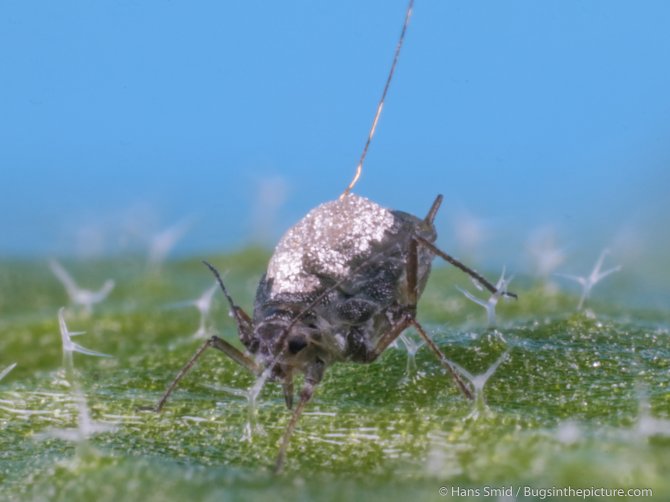
News
New broad type of resistance against insects found in plants
Identifying the genetic code for disease resistance in plants is normally a tricky thing. A single gene can usually only offer protection against a specific disease or parasite. But this time it’s different. Researchers at Wageningen University & Research have discovered that a resistance gene in thale cress (Arabidopsis thaliana) against the green peach aphid, also affects other aphids and whiteflies. However, not every aphid or whitefly species is put off. The tobacco whitefly and mustard aphid are unaffected and still feast on the plant, but for the latter this does involve an unusual spitting ritual.
Aphids are widespread on plants and agricultural crops. They feed on plant sap, but also spread viruses. Efforts to reduce the use of insecticides in agriculture therefore include a lot of research into natural defence mechanisms in plants.
Karen Kloth, a researcher in the Entomology laboratory of WUR, specialises in this area. In 2017 she discovered a gene that makes one plant species – thale cress – more resistant to the green peach aphid. In a new experiment, published in Plant, Cell & Environment, she and her fellow researchers demonstrate that this gene is found in every part of the plant (the roots, leaves, stems and buds), but is only active in the so-called phloem– the cells which transport the sugar-rich sap through the plant. They also discovered that the gene works against other species of aphid and whitefly which, like the green peach aphid, feed on phloem sap.
Plant gene reduces insect reproduction and appetite
It turns out that the tobacco aphid, cabbage aphid and cabbage whitefly don't fare so well on plants that contain this gene, says Kloth. “They produced fewer offspring or eggs during the experiment. Detailed behavioural tests also revealed that when plants contained the resistance gene, the aphids spent more time salivating before they could start to eat, and also spent less time feasting on the phloem sap.”

Mustard aphid spits up to 20 times before it starts to eat
However, the gene doesn’t work against the mustard aphid or the tobacco whitefly. The mustard aphid displayed unusual behaviour that might disable the resistance. Kloth: “These aphids would repeatedly inject their needle-like mouth parts into the phloem and then spit, doing so up to 20 times before they actually began to eat. This suggests that repeatedly injecting spit with special proteins helps the Mustard aphid bypass resistance."
Increasing the natural resilience of crops
The research, carried out in collaboration with Umeå University and KeyGene, was partially funded by a Veni grant awarded to Kloth in 2018 by the Dutch Research Council (NWO) to carry out research into natural defence mechanisms in plants against insect pests and viruses that could help reduce the use of insecticides. “Many crops are affected by infestations of aphids and whiteflies. They are difficult to deal with, leading to the spread of plant viruses and jeopardising yields. It’s therefore quite remarkable to discover that a single gene in thale cress offers protection against different species of aphid and whitefly. It’s hoped that further research will reveal the underlying mechanism at work and how this gene can be used to increase the natural resilience of crops.”
EntoLab
Kloth and her colleagues discovered the resistance gene against aphids with EntoLab, a novel computerized system for automated high-throughput screening of insect behavior, jointly developed with Wageningen University & Research. EntoLab revolutionizes plant breeding through the automated identification of plant resistance traits, thus contributing to a more sustainable agriculture.